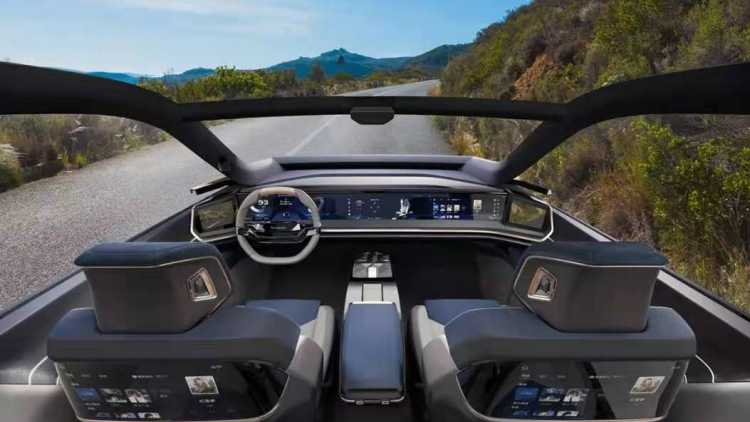I first heard of Faurecia’s name a few years ago when I was paying attention to the Mercedes-Benz GL series SUV. Faurecia is famous for manufacturing car seats and is a core supplier for many first-line luxury brands.
Starting with seats, Faurecia has now formed four major product business areas, which are seating systems, interior systems, automotive electronics, and green mobility intelligent systems. With these four major businesses, Faurecia achieved a sales revenue of €14.7 billion (approximately RMB 115 billion) in 2020, making it possible for every three cars globally to be equipped with “Faurecia technology.”
On June 4th, Faurecia came to Ideal Automotive R&D headquarters to hold a “Technology Showcase Day.” As a top global auto parts supplier, what kind of black technology does Faurecia have thinking about the future intelligent cockpit?
Exploring “Black Technology”
Faurecia’s exhibition hall is divided into two parts. One part is mainly focused on showcasing the latest technologies of Faurecia’s parts, while the other part is a concept-grade cabin, the “Intelligence Essence Cabin,” which is built according to Faurecia’s understanding of the future intelligent cockpit, by integrating various black technologies.
In the parts exhibition hall, more than 20 parts of various sizes were exhibited, which can be summarized into three categories: new materials, new interactions, and new designs.
For new interactions, Faurecia demonstrated the operation logic of a central control screen on-site. By consolidating the screen into three areas with one button and dragging an area to expand to the full screen, Faurecia hoped to achieve the function of “three screens with one screen” and a quick switch.
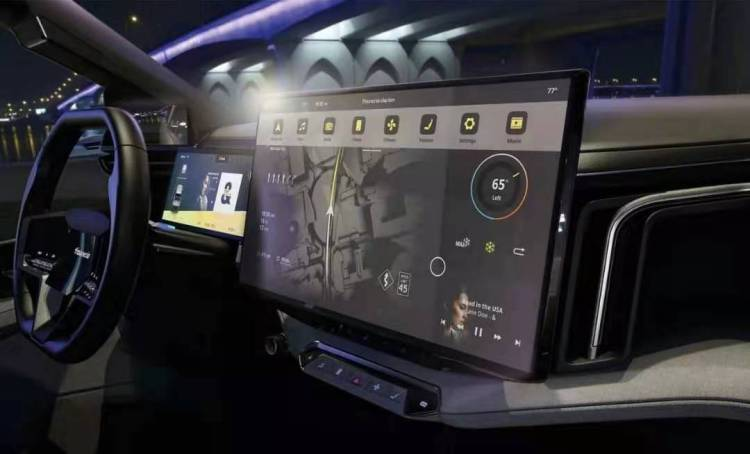
In terms of new materials, under the background of carbon neutrality, the application of environmentally-friendly and recyclable materials will be increasingly used in various corners of the interior, and consumers’ awareness and recognition of environmental products will deepen. Therefore, Faurecia has conducted a lot of research and exploration in the field of interior materials, and natural materials such as hemp fiber will appear more and more in the appearance and non-appearance parts of the interior.
In terms of new designs, screens are occupying more and more space in the cabin, and many functional and expansion requirements need to be realized through the screen. How to make the appearance of the screen not compress the space of other essential modules? Here is an example: it is possible to seamlessly combine the air vent and the screen. The traditional air vent needs to occupy more space on the instrument panel, but Faurecia can integrate the air vent and the display into one, and the screen size can be increased by 20% or even more. The functionality can also be guaranteed.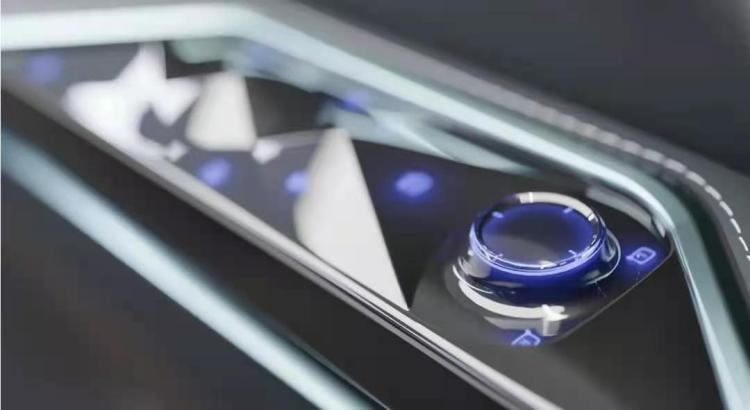
A multimodal intelligent surface, with a brand-new design that attracts many people’s attention on site, was presented. It is a collection controller that can be “arbitrarily” arranged according to the layout of the car’s interior, with surface materials that include various materials such as crystal, genuine aluminum, and real wood, which can also achieve light transmission. Based on the functionality of the intelligent surface, I personally think that it is more to meet the needs of the second-row passengers for vehicle control.
First Experience of the Intelligent and Refined Cabin
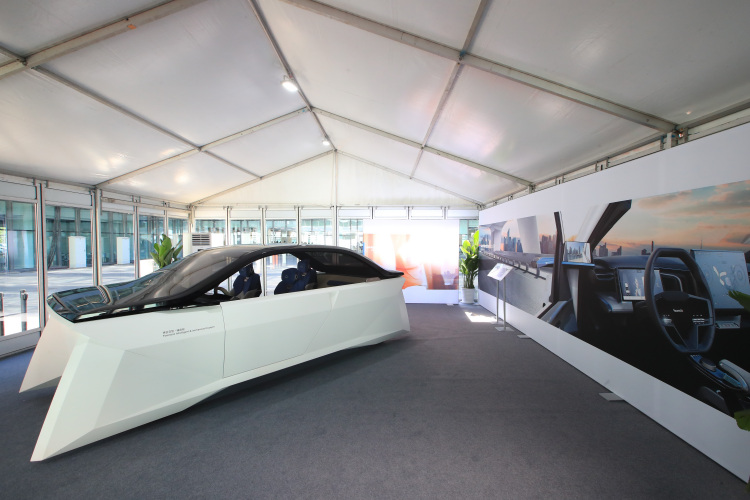
This cute “car shell” is the Intelligent and Refined Cabin carefully crafted by FAW. The highlights are all inside. The entire cabin integrates various black technology configurations of FAW, such as super-sized displays, crystal intelligent surfaces, decorative electric vents, fragrant headrests, and so on.
This intelligent cabin is mainly tilted towards three design directions: connectivity, multifunctionality, and predictability. Connectivity is relatively easy to understand, which strengthens the connection between people, cars, and the outside world through networks. Multifunctionality is to find a way of life that can be enjoyed in the car besides driving and riding, such as immersive sound experience, fragrant seat massage, etc. Predictability refers to using sensors, big data, and artificial intelligence technology to help the cabin learn, predict and adapt to the needs and status of each driver and passenger, improving security.
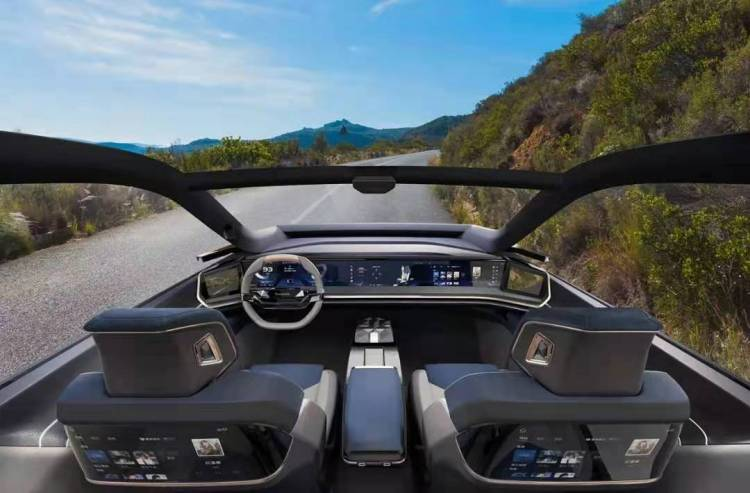
During the experience of the intelligent cabin, if I had to describe the feeling with one word, it would be linkage. As a supplier of parts and components, the understanding and expression of the intelligent cabin may be slightly different from that of the main engine factory. The main engine factory is more likely to deduce the direction of the intelligent cabin based on user data, while FAW provides a different feeling based on its integration capabilities of parts and components.
Taking the comfortable space in the second row as an example, when the passenger enters the rest mode, the second-row seats will be flattened, and the front-row seats will automatically move forward. The ambient lights, the fragrance system behind the seat headrests, and the massage system of the seats will all be linked and turned on. Taking fatigue monitoring in the front row as an example, when the system detects that the driver is tired, a series of actions such as blowing wind from the front, awakening fragrant smells, and voice reminders will be taken to remind the driver to stay alert. Taking temperature adjustment as an example, the air-conditioner, seat ventilation/heating, and the warm interior panel can be adjusted in conjunction with the sensors monitoring the occupants of the car to adjust the temperature of the entire car environment.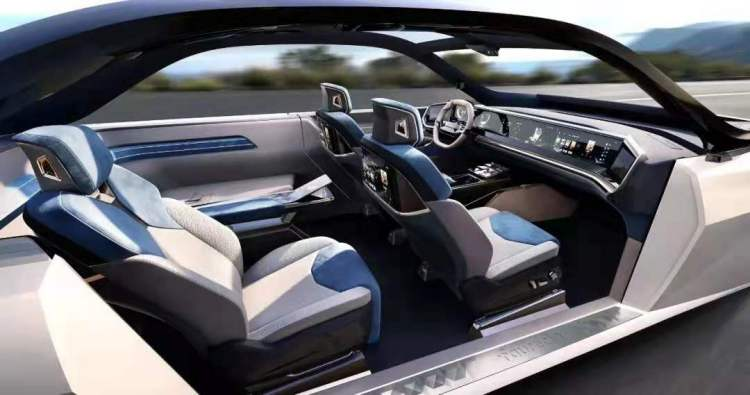
Regardless of whether such linkage is necessary for drivers, it can give people a sense of advanced technology, making the surrounding components seem to have come to life to perceive the needs of passengers in the car. Therefore, in the future intelligent cockpit, the ability to perceive will be indispensable.
What kind of intelligent space do people need?
After experiencing the Geely Smart Cockpit for the first time, I was also thinking about a question: what kind of smart space do people need in the future? At present, most users’ demands for smart space have not been fully explored due to the prolonged stay in the era of traditional cars.
Not long ago, a friend called me and asked why the Idean One is promoting “Karaoke” functionality as a selling point instead of promoting the manufacturing process, safety, and handling of the car itself? He even mentioned the KANO user demand analysis model (basic needs, expected needs, attractive needs, indifferent needs, and reverse needs), believing that promoting “Karaoke” in a car is a reverse demand.
From my friend’s perspective, as a user who has been using traditional cars for a long time, it is indeed difficult to understand why a car began to promote functions outside of the car. But I think every Idean One owner will understand through long-term use that a car is no longer just a car. Just like the Nokia era of mobile phones, people pursued durability, fall resistance, waterproofing, standby time, and call quality. However, in the Apple era of mobile phones, internet access, watching TV shows, playing games, and taking photos have become the core functions of high-frequency use of mobile phones.
The key point of this change is that a product that subverts the mass’s cognition is placed in front of users, and the Idean One is like the first generation iPhone. People thought they did not need extended range, but now more and more car companies choose this technical route; People thought they did not need a co-pilot entertainment screen, but more and more new car models are using it as a selling point; People thought they did not need a 6-seater SUV, but 6-seater has become the choice of over 96% of Idean One users; People thought they did not need a microphone, but it has become one of the essential car accessories for new car owners.
Therefore, the car is no longer just a car, it has become a mobile home, a smart space that makes everyone in the family happy. In this context, users’ demands will be expanded to dimensions outside of cars. So, what will the future intelligent space look like? There is no conclusion yet, but it is precisely because of the exploration by various companies in the industry that the goal becomes clearer and clearer. Ultimately, every consumer living in this era of technological explosion will benefit.
What features do you think the future intelligent space will have? Open your mind and leave a message for discussion.
This article is a translation by ChatGPT of a Chinese report from 42HOW. If you have any questions about it, please email bd@42how.com.
